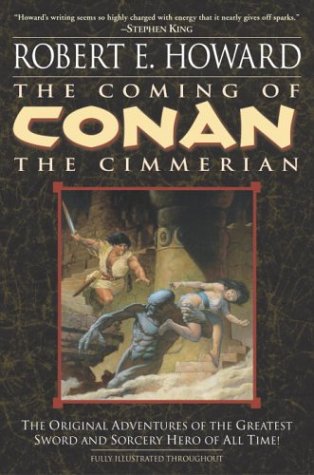Essay: On Mowing the Lawn
An Atheist Watches "The Passion of the Christ"
5 Questions About: Documentary Films
Under God's Right Arm: The Glorious Rev. Falwell
"Maus" Revisited
Fantastically Bad Cinema: Music & Lyrics
The Short, Short Story Contest
5 Questions About: Dorothy Parker
Beautiful Obscure: 12 Great Lesser Known R.E.M. Songs
Literary Criticism
Fantastically Bad Cinema
Essays
Under God's Right Arm
June 2006
July 2006
August 2006
September 2006
October 2006
November 2006
December 2006
January 2007
February 2007
March 2007
April 2007
May 2007
June 2007
July 2007
August 2007
September 2007
October 2007
November 2007
December 2007
January 2008
February 2008
March 2008
April 2008
May 2008
June 2008
July 2008
August 2008
September 2008
October 2008
November 2008
December 2008
January 2009
February 2009
March 2009
Alcoholic Poet
Baby Got Books
Beaman's World
BiblioAddict
Biblio Brat
Bill Crider's Pop Cultural Magazine
The Bleeding Tree
Blog Cabins: Movie Reviews
A Book Blogger's Diary
BookClover
Bookgasm
Bookgirl's Nightstand
Books I Done Read
Book Stack
The Book Trib
Cold Hard Football Facts
Creator of Circumstance
D-Movie Critic
The Dark Phantom Review
The Dark Sublime
Darque Reviews
Dave's Movie Reviews
Dane of War
David H. Schleicher
Devourer of Books
A Dribble of Ink
The Drunken Severed Head
Editorial Ass
Emerging Emma
Enter the Octopus
Fatally Yours
Flickhead
The Genre Files
The Gravel Pit
Gravetapping
Hello! Yoshi
HighTalk
Highway 62
The Horrors Of It All
In No Particular Order
It's A Blog Eat Blog World
Killer Kittens From Beyond the Grave
The Lair of the Evil DM
Loose Leafs From a Commonplace
Lost in the Frame
Little Black Duck
Madam Miaow Says
McSweeney's
Metaxucafe
Mike Snider on Poetry
The Millions
Moon in the Gutter
New Movie Cynics Reviews
Naked Without Books
A Newbie's Guide to Publishing
New & Improved Ed Gorman
9 to 5 Poet
No Smoking in the Skull Cave
Orpheus Sings the Guitar Electric
Polly Frost's Blog
Pop Sensation
Raincoaster
R.A. Salvatore
Reading is My Superpower
Richard Gibson
SciFi Chick
She Is Too Fond Of Books
The Short Review
Small Crimes
So Many Books
The Soulless Machine Review
Sunset Gun
That Shakesperherian Rag
Thorne's World
The Toasted Scrimitar
This Distracted Globe
Tomb It May Concern
2 Blowhards
Under God's Right Arm
A Variety of Words
The Vault of Horrr
Ward 6
When the Dead Walk the Earth
The World in the Satin Bag
Zoe's Fantasy
Zombo's Closet of Horror
Bookaholic Blogring
Power By Ringsurf
America's Greatest Protest Song Turns 70 Years Old

Southern trees bear strange fruit,
Blood on the leaves and blood at the root,
Black bodies swinging in the southern breeze,
Strange fruit hanging from the poplar trees.
Pastoral scene of the gallant south,
The bulging eyes and the twisted mouth,
Scent of magnolias, sweet and fresh,
Then the sudden smell of burning flesh.
Here is fruit for the crows to pluck,
For the rain to gather, for the wind to suck,
For the sun to rot, for the trees to drop,
Here is a strange and bitter crop.
When you listen to Billie Holiday sing “Strange Fruit” it’s difficult not to feel an icy shudder slip down your spine. Her haunting voice backed by the lonely wail of a trumpet cuts right to the bone. There’s no avoiding “Strange Fruit.” The song refuses to be shoved to the background. It pushes, elbows, and kicks its way to the forefront.
“Strange Fruit” refuses to be ignored. The song, written in 1937, vividly captures a lynching. The “strange fruit” of the song are the hanging corpses of black men dangling from the branches of a tree. The lyrics are so bold – so direct, that they’re like a swift kick to the teeth.
Holiday, who died in 1957 and may be the best female jazz singer in history, used to end her sets at the New York jazz club, Café Society, with the song. She’s perch on the stage with a lone spotlight washing over her as she sang “Strange Fruit” with her eyes closed.
The song held such an emotional impact over Holiday that she often broke down backstage (
“Strange Fruit” had much the same effect on audiences. It often left the mostly rich, white patrons of Café Society squirming in their seats and many complained to the club owners about the lyrics. In fact,
Without a doubt, “Strange Fruit” is one of the greatest protest songs of the 20th century. The song helped pave the way for the protest songs of
Amazingly, despite her claims to the contrary,
Meeropol was inspired to write the song after being horrified by the Lawrence H. Beitler photograph of Thomas Shipp and Abram Smith lynched in Marion, Indiana in 1930 (see the photo above). He wrote the song as a poem and published it in The New York Teacher, a socialist union magazine.
Meeropol, who later penned songs for Frank Sinatra and Peggy Lee, set the song to music and performed it with his wife and a black woman piano player named Laura Duncan. But without
“Strange Fruit” took protest songs out of the shadows and proved that they could be popular hits. And 70 years later, "Strange Fruit" still stirs the soul and proves that music can help change the world.
Listen to Dark Party's favorite protest music at iTunes
Labels: Billie Holiday, Music, Strange Fruit
 StumbleUpon |
StumbleUpon |
 del.icio.us |
del.icio.us |
 Technorati |
Technorati |

This work is licensed under a Creative Commons Attribution-No Derivative Works 3.0 License.
The Template is generated via PsycHo and is Licensed.




